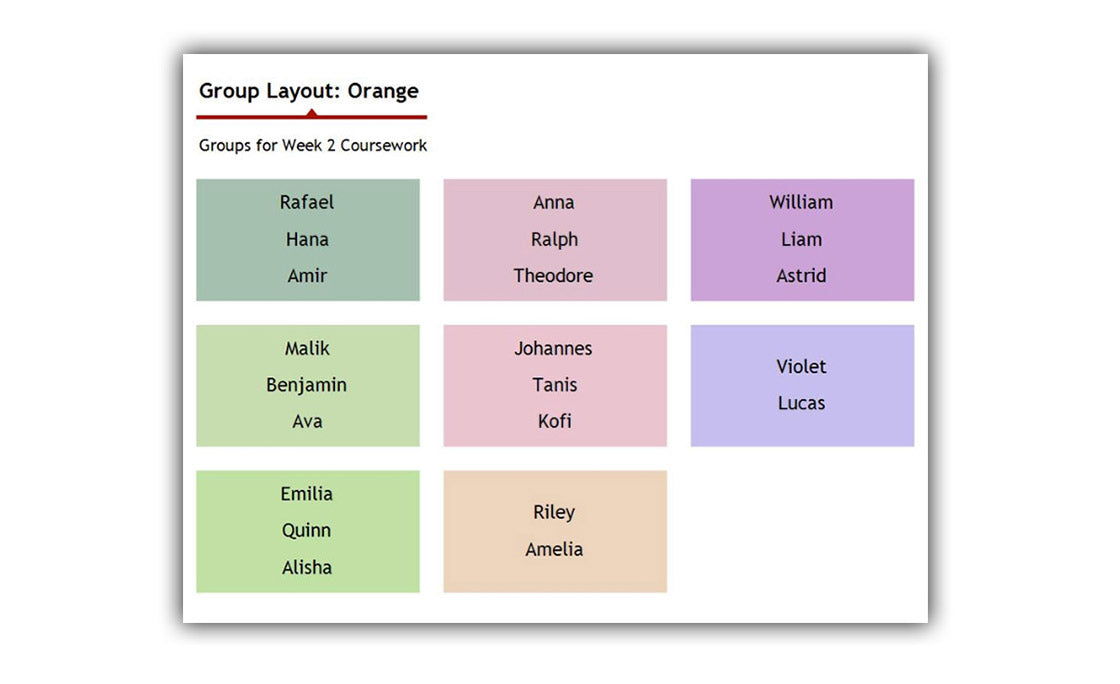A team, according to Katz Enbach, is a small group of people with complementary skills, committed to a common purpose and a set of specific performance goals. As a team leader you are likely to inherit or build a new team at some point during your career. It is vital to your success to produce a team with individuals who share visions and interests, enjoy working with each other and have a winning attitude.
This article focuses on five main areas that should be considered by team leaders or project managers when managing a successful and productive team.
Set Out the Team Agenda
As a team leader, it is important to set out a clear agenda before starting on any project. Team members need to know precisely what is expected of them in the team and how they need to interact with others to achieve their objectives. Involving team members in developing the agenda whenever possible and working with the team to plan the actions towards the goal will increase the interaction between leaders and team members. This also gives individuals a sense of ownership and responsibility which ultimately increases their interest in the project.
Select Suitable Team Members
It is important to select the right people for every project. Individuals chosen for each team should be able to interact and work closely with others while at the same time have the ability to work on their own and make important decisions. If as a leader, you have inherited an existing team, you should carefully evaluate each team member to detect any imbalance in the structure of the team. Individuals’ expertise, experiences and skills should be taken into consideration as well as their social skills, people management and emotional intelligence. Individuals chosen for the team should be similar enough in background or education to want to work with each other but not so similar to offer no added values when it comes to ideas or innovations.
Manage Team Boundaries
Team leaders are responsible for monitoring and managing team boundaries in order to create an environment necessary for success. Some constituents of team boundary include customers, financial markets and competitors. By monitoring these factors constantly, team leaders can decide what changes or improvements are needed to adapt to the changes in customer’s requirements, changes in competitors or the influence of financial markets. Building key relationships with those outside the team are vital as this allows leaders to notice any change in these factors quickly and respond accordingly and in time.
Assess Team Effectiveness
When evaluating team performance, there are three key areas that need to be considered.
- Team performance. This involves assessing the effectiveness of decisions made and to ensure that the products or services provided meet the standards of clients.
- Team satisfaction. This is an important objective which is often overlooked by team leaders. Leaders who allow their teams to make decisions and take responsibility for their actions and subsequent success or failure, help team members to satisfy their individual needs. In contrast team leaders who focus on output only and ignore employees’ ambitions and needs cause frustration within the team.
- Team adaptability. This is another factor to consider when assessing effectiveness. Members of a successful team learn from experience and over time they can anticipate their team mate’s responses and actions and react accordingly to support their actions. Lack of adaptability leads to ineffective teams with reduced output.
Be Aware of Eliminators
Eliminators are problems that can prevent teams from flourishing and achieving its objectives. Jealousy and negativity are some of these factors. You can employ a number of tactics in order to deal with these problems effectively.
- Praise current team members on their achievements and emphasise how they have contributed to teams’ success in the past and continue to do so while working on new projects. This attitude will reduce the risk of jealousy whenever a new skilled member is added to the team or someone who has been promoted.
- Some people are more cynical than others and they tend to see the glass half empty. They are quick to point out short comings of the team when faced with a challenging project. To deal with these types of employees, ensure you highlight teams’ achievements, the success of the company or the project so far and how a clear vision, efficient planning and skilled workforce will guarantee the future success. Deal with negativity assertively as this sort of attitude can damage morals and reduce productivity. Negativity is contagious.
Soft Skills Training Materials
Get downloadable training materials
Online Train the Trainer Course:
Core Skills
Learn How to Become the Best Trainer in Your Field
All Tags
Training Resources for You

Course Design Strategy
Available as paperback and ebook

Free Training Resources
Download a free comprehensive training package including training guidelines, soft skills training activities, assessment forms and useful training resources that you can use to enhance your courses.

Our Comprehensive Guide to Body Language

Train the Trainer Resources
Get Insights - Read Guides and Books - Attend Courses
Training Materials
Get downloadable training materials on: Management Training, Personal Development, Interpersonal Development, Human Resources, and Sales & Marketing














Leave a comment
All comments are moderated before being published.
This site is protected by hCaptcha and the hCaptcha Privacy Policy and Terms of Service apply.